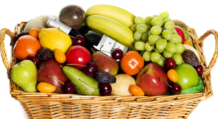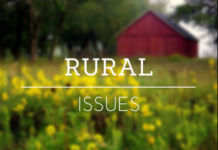K-State food scientist outlines differences between a sponge and starter
MANHATTAN, Kan. – Nothing beats the smell of fresh baked bread, but what is it that gives different breads distinct tastes and smells?
Kansas State University food scientist Karen Blakeslee said many bread cookbooks use terms such as sponge and starter interchangeably. But, she said, they are not the same.
“In bread, a starter is a form of yeast,” Blakeslee said, “It is typically a combination of flour and water that is exposed to air to attract wild yeasts such as lactobacilli bacteria, to create fermentation.”
Blakeslee explained that these harmless yeast organisms create fermentation and eventually unique flavors in the bread.
“Many home bakers have bread starters that have been active for years and passed on to future bakers,” Blakeslee said.
A sponge, on the other hand, is an extra step in the bread making process. Bakers combine yeast, some of the flour and water to create a sponge that can be allowed to ferment from 30 minutes to several hours. After fermentation, the bread making process proceeds as usual. Longer fermentation gives bread stronger flavors.
“A yeasty aroma and acidic flavors start to develop, adding more flavor to the finished bread,” Blakeslee said.
Some bakers choose to do the extra step of making a sponge in order to add a slight sour and tangy flavor to the bread.
“Not all sourdough bread tastes the same,” Blakeslee said. “This is due to the different microorganisms and how the dough is handled.”
Time, temperature and other ingredients add to the complex development of flavor in bread.
While these baking techniques are safe, Blakeslee reminds home bakers to handle starters with clean hands and utensils to reduce the possibility of contamination by unwanted bacteria.
Blakeslee, who is also coordinator of K-State’s Rapid Response Center for Food Science, publishes a monthly newsletter called You Asked It! that provides numerous tips on food safety. More information is also available from local extension offices in Kansas.
-30-
FOR PRINT PUBLICATIONS: Links used in this story
K-State Rapid Response Center for Food Science, www.rrc.k-state.edu
You Asked It! (newsletter), www.rrc.k-state.edu/newsletter
K-State Research and Extension statewide offices, https://www.ksre.k-state.edu/about/statewide-locations.html
K-State Research and Extension is a short name for the Kansas State University Agricultural Experiment Station and Cooperative Extension Service, a program designed to generate and distribute useful knowledge for the well-being of Kansans. Supported by county, state, federal and private funds, the program has county extension offices, experiment fields, area extension offices and regional research centers statewide. Its headquarters is on the K-State campus in Manhattan. For more information, visit www.ksre.ksu.edu. K-State Research and Extension is an equal opportunity provider and employer.
Story by:
Emily Halstead
For more information:
Karen Blakeslee
785-532-1673





